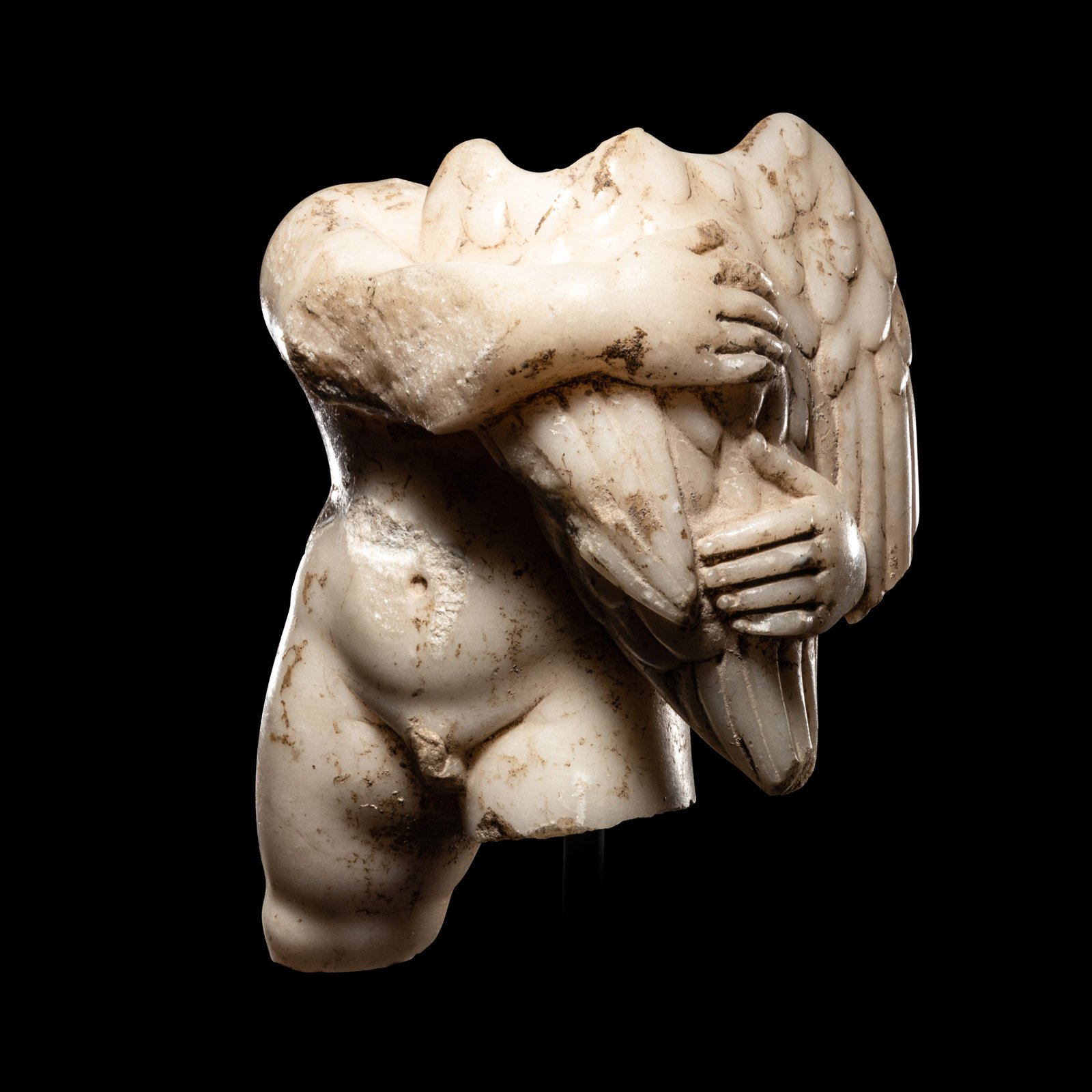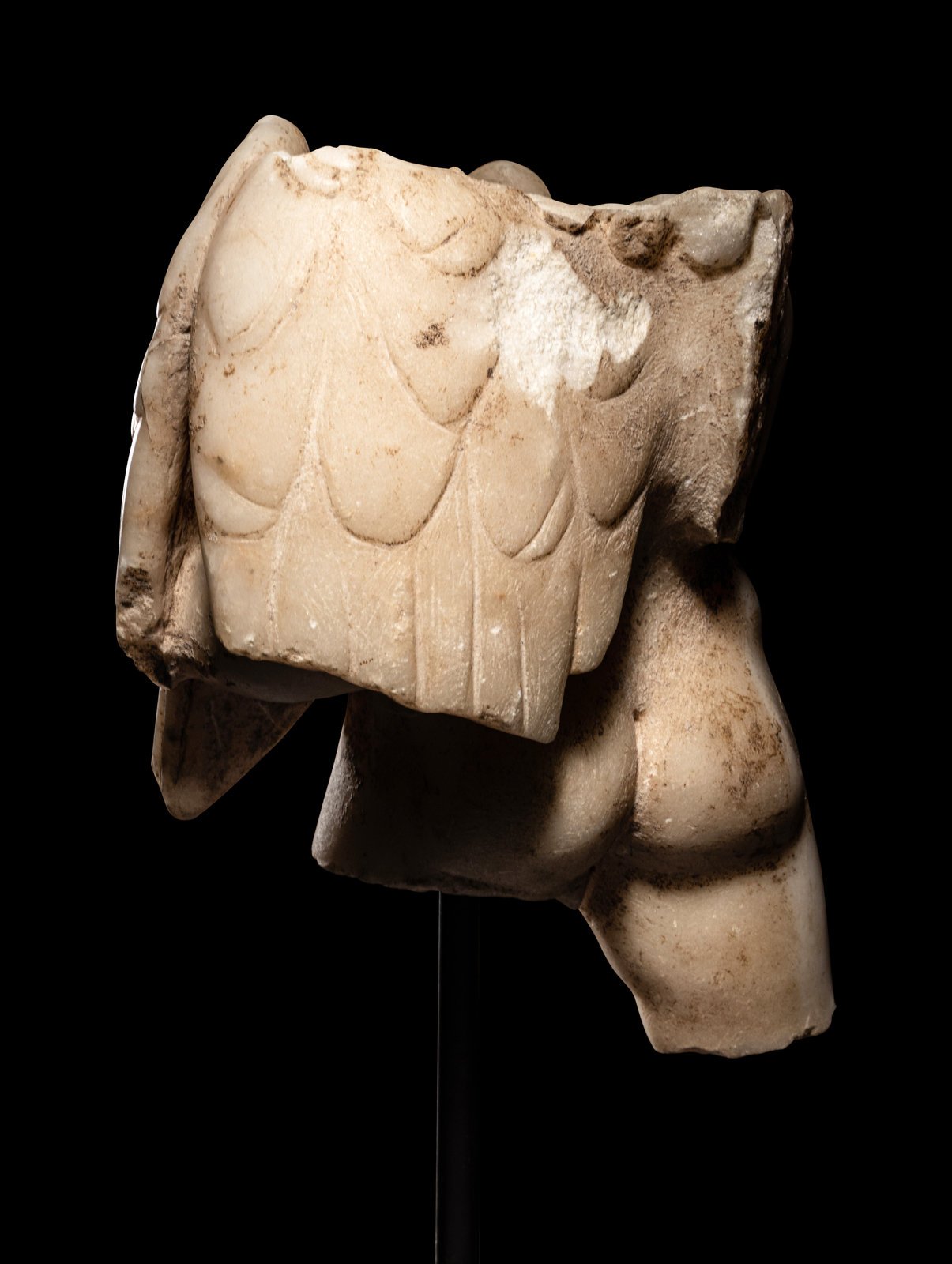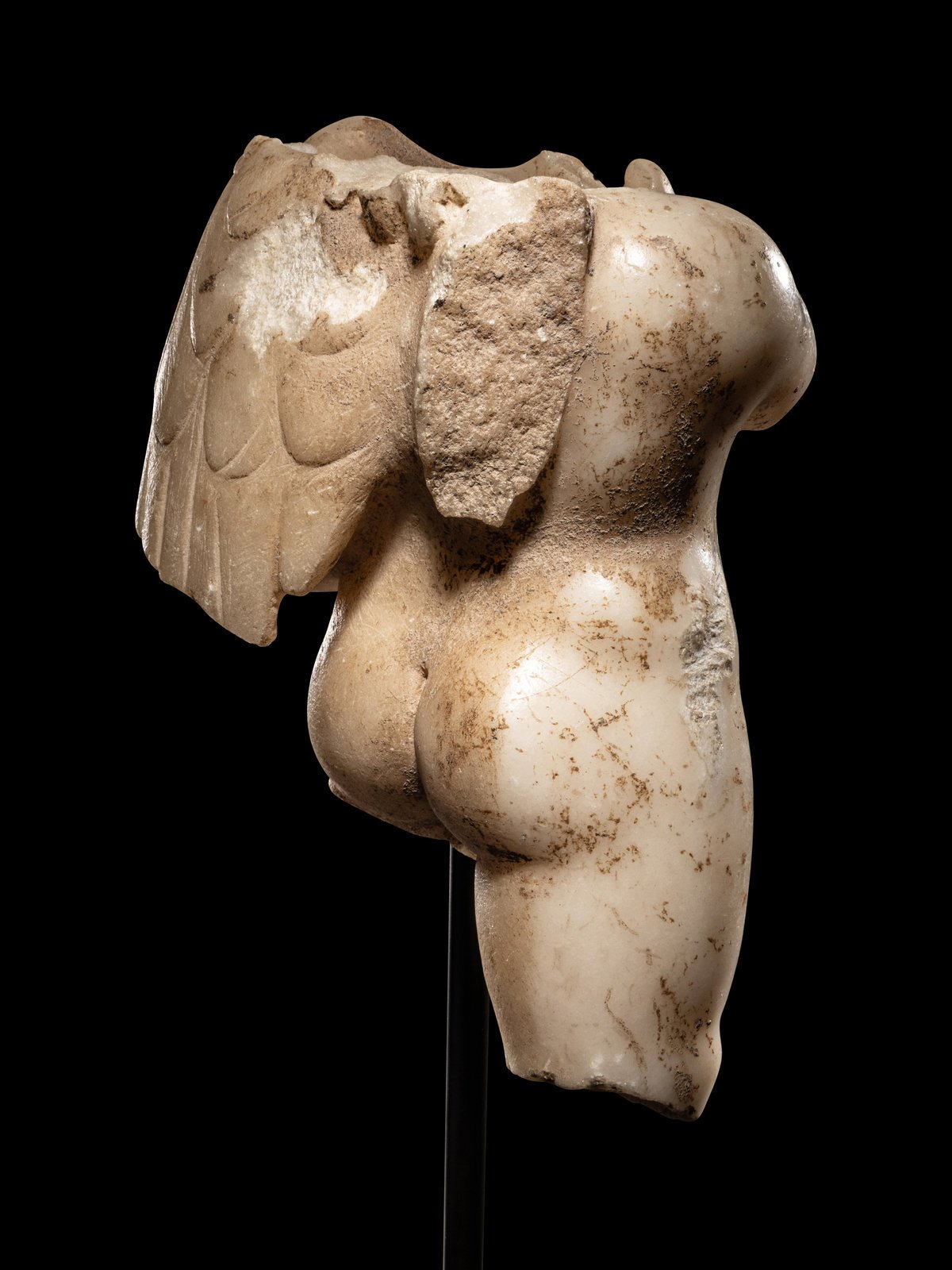Ancient Roman Marble Cupid with a Bird




Ancient Roman Marble Cupid with a Bird
Roman, 1st-2nd century A.D.
Marble
H: 28 cm
Serial: 16336
Provenance: Ex-private German collection, ca. 1980.
A small, statuette-size sculpture represents Cupid (Eros in Greek art) holding a big bird against his chest. The motif comes back to the Hellenistic art that introduced several charming representations of children or Erotes with their pets, little dogs or birds. Sometimes the playful mood leads the child to embrace the pet so hard that he almost suffocates the animal; sometimes the pet’s resistance turns to a struggle. A famous sculpture of a child struggling a goose, the original by Boethos of Chalcedon, Greek sculptor of the 2nd century B.C., was mentioned by Pliny the Elder (Natural History, XXXIV, 84).
The Boethos child became widely popular and was copied several times by the Roman sculptors. It was also served as an inspiration source for multiple adaptations and variants of which the present piece is the one. The Boethos sculpture, known through the best copies displayed in the Capitoline Museum and the Munich Glyptothek, helps to reconstruct the composition of the fragmented Cupid. The child stands with his legs wide apart and the knees slightly bent, the body is thrown back and the head is turned toward the big bird trying to keep standing and away from the boy’s embrace. The Cupid represents exactly the same action except for the smaller bird that does not stand on the ground but is lifted in the Cupid’s arms. The sculpture is very well modeled, the proportions and the round forms of child’s body are realistically rendered, and attention was brought to every detail: the naval, the fingers inter-space was drilled and the feathers of different size of both bird’s and Cupid’s own wings were engraved. The carefully polished surface shines, the marble gives the best idea of a healthy skin of the child.
Such statuettes frequently populated the areas of recreation in a house or a villa, they have been found in the garden or fountain arrangement. They also served as dedications to the gods related to the baby’s birth or health such as Aphrodite, Artemis or Asklepios which is confirmed by the 3rd century B.C. epigram of the poet Herodas (4. 30-31) who describes two women visiting the Asklepios sanctuary, watching and admiring the votive sculptures displayed in the precinct, the child with a goose among them.








